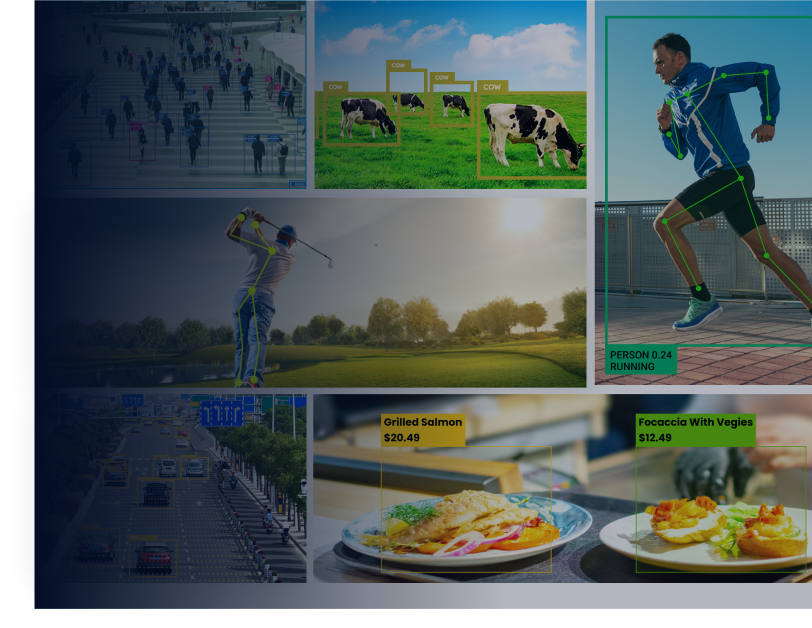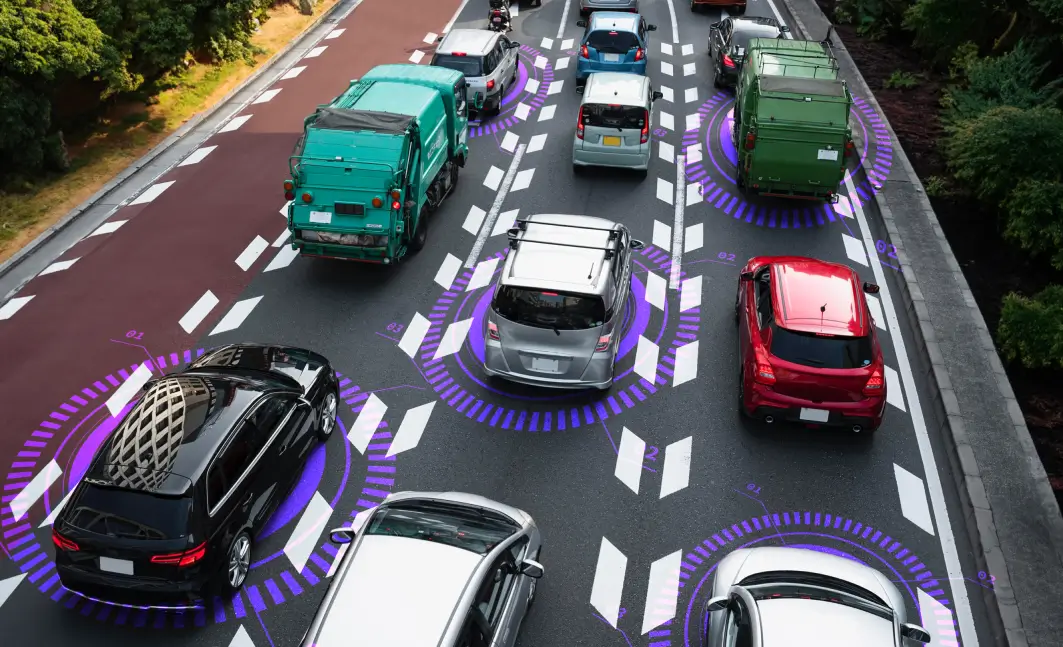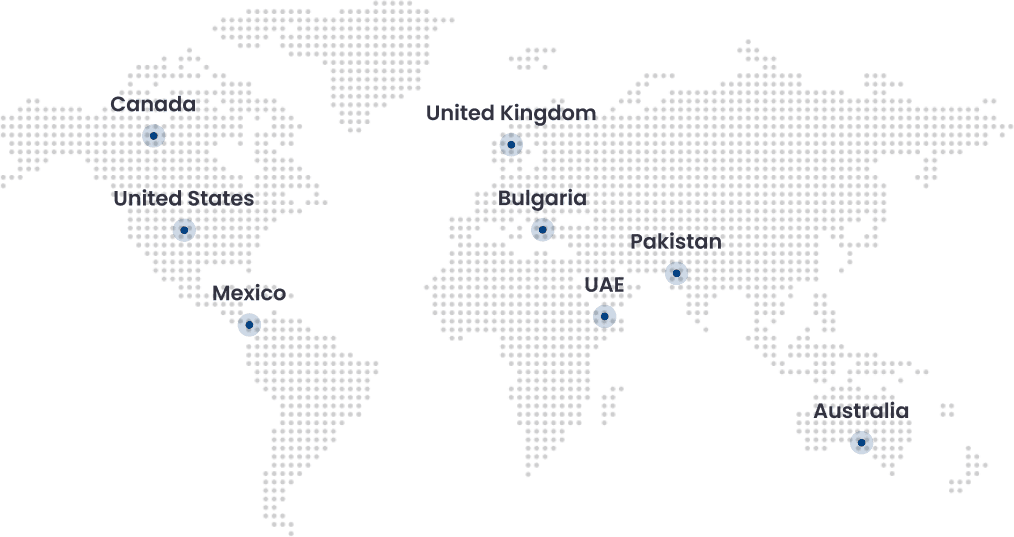Traffic congestion is a significant problem in metro cities worldwide. In 2020, a study by the American Transportation Research Institute revealed that the United States economy loses a staggering $871 billion annually because of wasted time and fuel caused by traffic jams. However, with advanced vehicle detection technology, it has become easy for police to optimize traffic flow. This technology uses intelligent algorithms and sensors to adjust signal timings based on the number of cars on the road, which helps reduce commuters’ travel time, making their daily journeys more efficient.
In this blog, we’ll discuss how vehicle detection solutions ( prebuilt models) provide services to optimize traffic flow in metro cities.
What Is Vehicle Detection Technology and How Does It Work?
In simpler terms, vehicle detection technology refers to the broader task of detecting the presence and location of vehicles within an image or a video frame.
For that purpose, it uses a combination of sensors and software to identify the presence, location, and sometimes classification of vehicles. These sensors are mostly placed on traffic signals or embedded into the road surface.
The data collected from these sensors is then analyzed by intelligent software algorithms that determine the number of vehicles present, their speed, and direction of travel.
This information helps to automatically control traffic flow in metro cities and even suggest alternate routes to reduce congestion. It also helps law enforcement agencies manage and detect any strange activity on the roads.
One of the major advantages of using this technology is that it processes large volumes of data quickly, which makes it useful for avoiding accidents and prioritizing emergency vehicles in times of need. Here’s a breakdown of how it works:
Sensors
- Cameras: Video cameras are widely used to capture visual data of the traffic scene.
- Radar: Radar sensors emit radio waves that bounce off objects and measure the distance and speed of vehicles.
- LiDAR (Light Detection and Ranging): LiDAR emits pulsed laser beams and measures the reflected light to create a detailed 3D map of the environment, including vehicles to optimize traffic flow.
Data Processing and Analysis
- Data Collection: The data captured by the sensors is fed into a central processing unit or computer equipped with specialized software.
- Image recognition: For cameras, image recognition algorithms analyze the video feed to identify objects with vehicle-like shapes and features.
- Signal processing: For radar data, signal processing techniques extract information about vehicle distance, speed, and direction.
- Machine Learning: Many systems use machine learning algorithms trained on vast datasets of labeled images or sensor data. This allows the system to continuously improve its accuracy in identifying and classifying vehicles in different lighting, weather, and traffic conditions.
How Vehicle Detection Solutions Optimize Traffic Flow in Metro Cities?
Before the implementation of advanced vehicle detection technology, traffic signals were set to fixed timings. This led to long wait times for commuters even when there was no traffic on the road or during off-peak hours.
However, with the integration of vehicle detection solutions ( prebuilt models), these traffic signals now adjust their timings based on real-time traffic data and help optimize traffic flow.
By detecting the number of vehicles present and their speed, this technology helps optimize traffic flow instantly, even if you are driving fast. This means less time spent waiting at red lights and more efficient travel for commuters.
Moreover, in cases of heavy traffic or accidents, the system suggests alternate routes to reduce congestion, which makes it ideal for managing traffic in busy metro cities.
It also helps to prevent any criminal activities or stolen cars from escaping, as these systems can instantly detect any anomalies on the road. Below are numerous methods through which vehicle detection solutions enhance the flow of traffic.
1. Dynamic Traffic Signal Management
- Traditional traffic signals rely on fixed timings, which lead to congestion during rush hour and underutilization during off-peak periods.
- Vehicle detection systems continuously monitor traffic flow. This data is fed into algorithms that adjust traffic signal timings in real time based on the number of vehicles waiting at each intersection.
- By prioritizing traffic flow with shorter waits for green lights on congested roads, these systems improve overall traffic throughput and reduce congestion.
2. Incident Detection and Response
- Traffic accidents, disabled vehicles, or even minor fender benders can quickly disrupt traffic flow.
- Vehicle detection systems can identify sudden changes in traffic patterns or stopped vehicles, allowing traffic authorities to be alerted immediately.
- Faster response times to incidents minimize the duration of disruptions and keep traffic flowing more smoothly.
3. Improved Route Guidance for Drivers
- Real-time traffic data from vehicle detection systems is often integrated with navigation apps.
- This allows drivers to be aware of congestion on different routes and choose the fastest or least congested alternative.
- Navigation apps with real-time traffic data can help alleviate congestion on popular routes by distributing traffic more evenly across the road network.
4. Dynamic Lane Management
- Some metro cities utilize dynamic lane management systems to adjust lane configurations based on traffic flow.
- Advanced vehicle detection technology plays a crucial role in this system by providing real-time data on traffic volume and lane occupancy.
- For instance, a lane might be designated for high-occupancy vehicles (HOV lanes) during peak hours to increase the number of passengers moving through and reduce overall traffic volume.
5. Improved Infrastructure Planning
- The data collected by vehicle detection systems can be invaluable for traffic engineers and city planners.
- By analyzing long-term traffic patterns, they easily identify bottlenecks, high-congestion zones, and underutilized roads.
- This data is then used to plan for future infrastructure improvements, such as road widening, additional lanes, or improved public transportation options.
Implementation of Advanced Vehicle Detection Technology in Business
Advanced vehicle detection technology offers businesses benefits beyond traffic management in metro cities. Here are some ways various businesses can use this technology.
Logistics and Delivery Companies
- Route Optimization: Real-time traffic data is integrated with fleet management software to plan the most efficient delivery routes, considering current traffic conditions. This reduces delivery times and fuel costs.
- Vehicle Tracking and Monitoring: Businesses quickly track their vehicles in real-time, monitor driver behavior, and ensure schedule adherence. This improves operational efficiency and customer satisfaction.
- Proof of Delivery: Vehicle detection systems with cameras capture images of deliveries being made, providing a digital record for verification purposes.
Retail Businesses with Parking Lots
- Smart Parking Management: Sensors detect available parking spaces in real-time, guiding drivers to open spots and reducing time spent searching for parking. This advanced vehicle detection technology lets customers feel comfortable and reduces congestion in parking lots.
- Automated Payment Systems: License plate recognition integrated with vehicle detection allows for automated parking fee collection, eliminating the need for tickets or pay machines.
Security Companies and Law Enforcement
- Perimeter Security: Vehicle detection systems also monitor entrances and exits of commercial properties, providing alerts for unauthorized vehicles.
- Traffic Law Enforcement: Data from vehicle detection systems used to inspect vehicles exceeding speed limits, running red lights, or driving in restricted zones.
Construction Companies
- Work Zone Management: Vehicle detection is the perfect solution for monitoring traffic flow around construction zones. It allows for dynamic adjustments to signage and lane closures to minimize disruption.
- Vehicle Access Control: Construction sites also use this technology for authorized entry, preventing unauthorized vehicles from entering restricted areas.
Top Applications of Vehicle Detection Solutions
Exploring the top applications of advanced vehicle detection technology not only showcases the adaptability and necessity of such advanced systems but also hints at a future where traffic congestion, vehicle-related crimes, and parking frustrations could become problems of the past.
- Intelligent Transportation Systems (ITS): Vehicle detection systems enhance traffic flow in metro cities for efficient urban mobility.
- Smart Cities: In addition to managing traffic flow in metro cities, vehicle detection solutions are used for intelligent parking management, public transportation planning, and infrastructure improvements.
- Tolling Solutions: Advanced vehicle detection technology is used in tolling systems to accurately track and charge vehicles passing through toll booths.
- Vehicle Counting and Classification: This application of vehicle detection is helpful for traffic studies, road improvement planning, and prioritizing public transportation routes.
- Pedestrian Detection: Some vehicle detection systems have advanced sensors to detect pedestrians and bicyclists, providing a safer environment for non-motorized travel.
- Border Control and Homeland Security: Vehicle detection can be used at border crossings to identify suspicious vehicles or illegal activity.
- Industrial Applications: Vehicle detection systems are used in industries such as mining and agriculture for fleet management and site safety.
Transform Road Traffic Analysis With Folio3AI
Vehicle detection solutions are transforming the way we analyze and manage road traffic. With advanced AI-powered algorithms and sensors, businesses, city planners, and law enforcement agencies now make more informed decisions to improve road efficiency, safety, and sustainability.
Folio3AI vehicle detection solution is the best solution for ensuring road safety. Its traffic analysis system automates vehicle counting and identifies vehicle types/categories, simplifying traffic monitoring and congestion management. With this capability, you can swiftly address traffic inefficiencies and make informed decisions to enhance overall traffic management.
Whether you want the solution deployed on-premises, in the cloud, or integrated via APIs, our team of experts has the flexibility to help you set it up the way you want. So, Contact us today and let Folio3AI help you transform road traffic analysis.

Dawood is a digital marketing pro and AI/ML enthusiast. His blogs on Folio3 AI are a blend of marketing and tech brilliance. Dawood’s knack for making AI engaging for users sets his content apart, offering a unique and insightful take on the dynamic intersection of marketing and cutting-edge technology.










